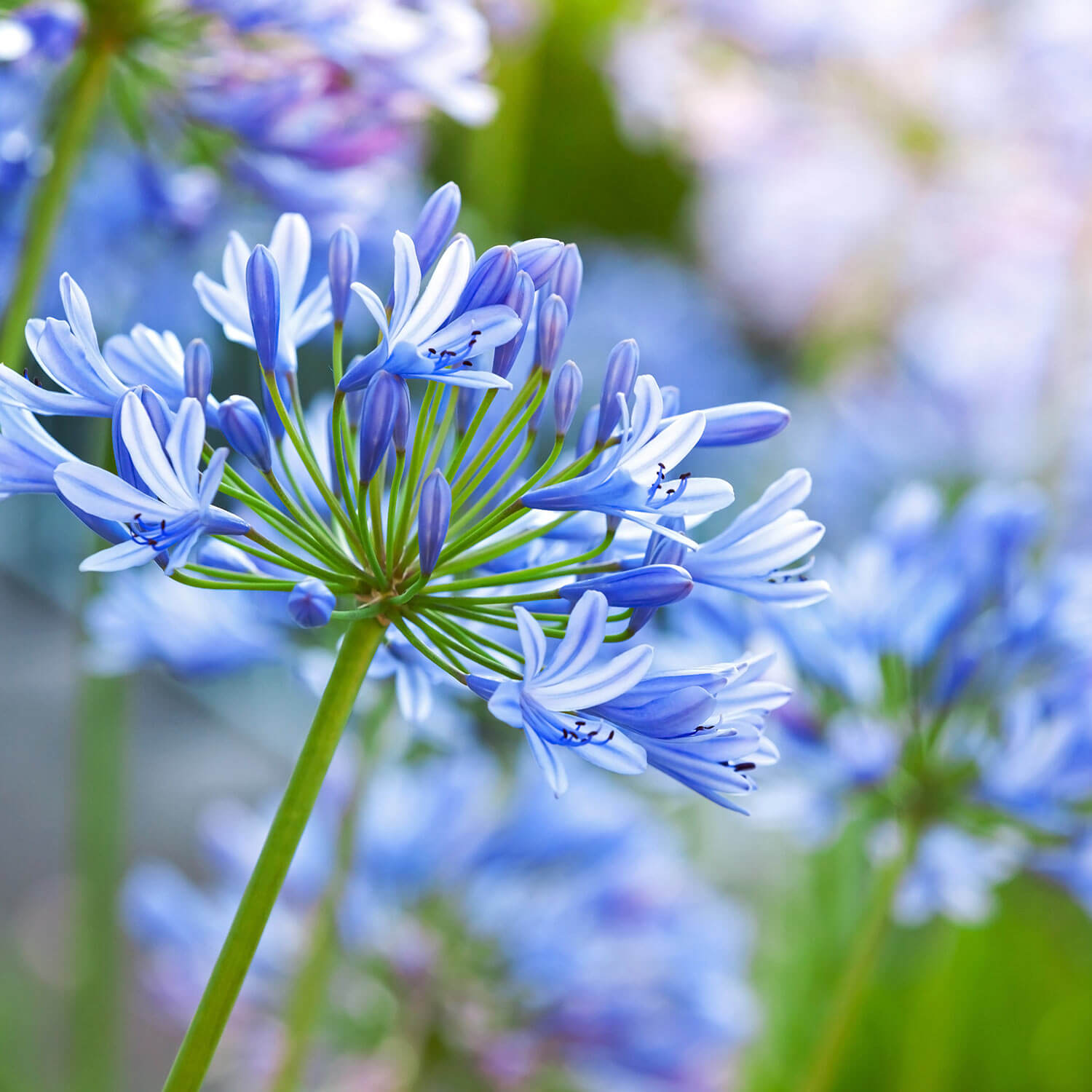Expanding Agapanthus: A Complete Guide to Beautiful Blooms
Expanding Agapanthus: A Complete Guide to Beautiful Blooms
Blog Article
Understanding the Art of Agapanthus Care: Vital Actions for Healthy And Balanced Development and Vibrant Blossoms
In the world of cultivation, the growing of agapanthus stands as a satisfying venture for those who seek to nurture these elegant blooming plants. From picking the ideal selection to understanding trimming strategies, the journey in the direction of cultivating prospering agapanthus plants is multifaceted and holds the essential to opening the full possibility of these botanical gems.

Choosing the Right Agapanthus Range

When picking the right Agapanthus range for your garden, think about aspects such as environment suitability, bloom color, and growth behavior. Agapanthus, commonly referred to as Lily of the Nile or African lily, comes in a range of colors ranging from tones of purple and blue to white. Choose a blossom shade that enhances your existing yard palette to create a harmonious landscape. In addition, take into consideration the climate in your area to ensure the Agapanthus range you pick can flourish in your particular conditions. Some varieties are extra forgiving of chilly temperature levels, while others favor warmer climates. Comprehending the growth practice of different Agapanthus ranges is critical for appropriate placement within your garden. Some ranges have a clumping development practice, perfect for borders or containers, while others have a more spreading nature, ideal for ground cover or mass plantings. By thoroughly reviewing these aspects, you can select the ideal Agapanthus range to boost the beauty of your yard.
Ideal Growing Problems
Taking into consideration the optimal ecological needs is essential for effective Agapanthus cultivation. Agapanthus plants are delicate to cold temperature levels and should be secured from frost throughout winter season months.
To ensure healthy and balanced growth and vibrant blossoms, plant Agapanthus light bulbs at a deepness of about 2-4 inches and space them 8-12 inches apart. Adding raw material, such as garden compost, to the dirt can improve drainage and fertility, advertising robust root growth. Mulching around the base of the plants assists retain wetness and subdues weed growth. Routine watering is essential, particularly during the growing period, to maintain the soil continually damp however not saturated.
Watering and Fertilizing Tips
Preserving correct wetness levels and offering necessary nutrients are crucial elements in the care program for Agapanthus plants. When it comes to sprinkling Agapanthus, it is vital to strike a balance. If overwatered, these plants favor constantly wet soil but are vulnerable to root rot. During the growing season, water deeply when a week, ensuring the soil YOURURL.com is well-draining to stop waterlogging. In hotter environments or during periods of dry spell, more regular watering may be required to keep the dirt evenly damp. Nonetheless, minimize watering in the winter months to avoid waterlogged problems.
Feeding Agapanthus is important for promoting healthy growth and prolific blooms. Apply a well balanced fertilizer, such as a 10-10-10 formula, in the early spring as brand-new growth emerges. By following these watering and fertilizing tips, you can ensure your Agapanthus plants flourish and create dynamic, resilient blooms.
Pruning Methods for Agapanthus
Pruning Agapanthus plants at the appropriate times and with appropriate strategies is vital for keeping their wellness and advertising ideal development and flowering. The perfect time to prune Agapanthus remains in her explanation late winter or very early springtime before brand-new growth arises. Begin by removing any dead or yellowing leaves near the base of the plant. Cut them as short as feasible without harming the arising shoots.
For flowered stems, wait until the blossoms have perished and afterwards cut them back to the base. This not only cleans the plant's appearance but also motivates the growth of new blossom buds. Deadheading spent blossoms can likewise reroute the plant's energy right into creating even more flowers instead of establishing seeds. Nevertheless, if you wish to accumulate seeds for propagation, leave some flowers to mature and dry on the plant.
Remember to utilize clean, sharp tools to make accurate cuts and decrease the danger of introducing diseases. Agapanthus. Routine pruning will help keep your Agapanthus looking neat and healthy and balanced while making sure an abundant display screen of gorgeous blooms
Taking Care Of Common Pests and Conditions
After making sure correct pruning strategies for Agapanthus, it is crucial to resolve typical pests and diseases that can affect the wellness and vigor of these plants. One usual parasite that influences Agapanthus is helpful site the Agapanthus gall midge.
Additionally, Agapanthus plants can suffer from origin rot if they are planted in improperly draining soil. By being vigilant and taking punctual action versus diseases and bugs, you can help your Agapanthus plants grow and produce vibrant flowers. Agapanthus.
:max_bytes(150000):strip_icc()/agapanthus-growing-guide-7368912_hero-a3585e4f9ffe4b99a73c7ad8eb4ebe48.jpg)
Verdict
In verdict, mastering the art of agapanthus care entails choosing the appropriate variety, providing suitable growing problems, correct watering and fertilizing, appropriate pruning techniques, and attending to usual parasites and conditions. By adhering to these crucial actions, you can make certain healthy and balanced development and dynamic flowers for your agapanthus plants. Bear in mind to regularly monitor and maintain your plants to promote their general wellness and durability.
To guarantee healthy development and lively blossoms, plant Agapanthus light bulbs at a depth of about 2-4 inches and room them 8-12 inches apart. By adhering to these watering and feeding ideas, you can ensure your Agapanthus plants thrive and generate dynamic, durable blooms.
One common bug that influences Agapanthus is the Agapanthus gall midget. In addition, Agapanthus plants can experience from root rot if they are grown in badly draining dirt. By complying with these important steps, you can make certain healthy development and dynamic blooms for your agapanthus plants.
Report this page